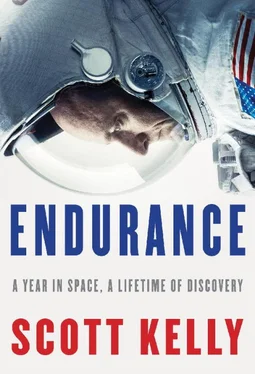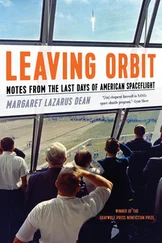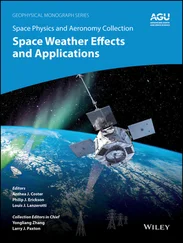The first day on the job involved a lot of paperwork and learning the basic aspects of working for NASA. Jeff Ashby was the astronaut from the previous class in charge of getting us oriented. We were introduced to the rest of the Astronaut Office and shown where our desks would be. I was to share an office with my classmates Pat Forrester, Julie Payette, Peggy Whitson, and Stephanie Wilson.
Our training started out in classrooms, where all forty-four of us began to realize the magnitude of knowledge we were going to need. We heard lectures on geology, meteorology, physics, oceanography, and aerodynamics. We learned about the history of NASA. We learned about the T-38, the jets the astronauts fly.
Most of all, we learned about the space shuttle. We were given an overview of how the shuttle worked as a whole, and we got specific lectures on each of the many individual systems—their designs, their nominal operations, their possible malfunctions, and how we should respond to those. We worked through a number of different failures that could occur as we executed the procedures we would use on actual missions. We trained that way on the main engines, on the electrical system, on the environmental control and life support system. It was challenging to master all of it, but it became even harder when we moved on to the shuttle mission simulator, which integrated all these systems together during the mission phases: prelaunch, ascent, post-insertion, on-orbit operations, deorbit prep, entry, landing, and post-landing.
Our trainers hammered us with the malfunctions we could face during a real flight. A critical phase was post-insertion, the period of time just as the shuttle is getting into orbit. We have to convert a vehicle that has launched as a rocket into a working orbital spaceship—reconfiguring the computers, getting the enormous payload bay doors open so their radiators could cool the shuttle’s electrical systems, deploying the Ku-band antenna so we could communicate with the ground, deploying the robot arm, making sure everything was working properly, and getting ready for on-orbit operations.
By far the most challenging and complicated phase of shuttle training was ascent. On a real launch, when everything went right, the flight crew had very little to do besides monitoring the systems, but NASA had to prepare us for every eventuality. So this phase of flight revealed those who had learned their stuff and those who hadn’t. We trained for the orbit phase, since that was where we would spend the most time on a real mission. We practiced payload operations—for instance, deploying and then retrieving a satellite. We practiced rendezvous and docking with Mir (the International Space Station didn’t exist yet).
We trained to do deorbit prep, which is post-insertion in reverse: learning to take an orbiting spaceship and reconfigure it into something that could reenter the Earth’s atmosphere and land—a space plane. We worked on putting the antenna and robot arm away, closing the payload bay doors, getting the computers configured for the last phase of flight, then programming the deorbit burn to slow us down by just a few hundred miles an hour, which is enough to get us to reenter the atmosphere. As a pilot, I practiced reentry and landing thousands of times. We never stopped practicing. This is the moment in the mission when having something go wrong can be the most serious, so I had to be prepared to deal with anything. I remember the first reentry simulation I ever did: I was sitting in the pilot’s seat and an experienced astronaut was monitoring me. I felt a lot of pressure to perform well, since this was my first time trying to demonstrate my fledgling astronaut skills in front of a real astronaut. I messed up starting the auxiliary power units, which provided power for controlling the shuttle’s three engines and for moving the control surfaces on the shuttle, like the elevon, rudder, and body flap. The APUs lowered the landing gear and powered the brakes, so we couldn’t land without at least one. Because of the way I started them up, one of them probably would have exploded. Not a great start. I didn’t do particularly well at following procedures verbatim, either. I had been under the impression that the detailed procedures we were learning were more like guidelines; I was wrong. To top it all off, my landing was bad enough that it might have killed us all. The space shuttle is one of the hardest planes to land ever, so on that I got a bit of leeway. On all the other screwups, not so much.
The very complexity of the space shuttle was why I wanted to fly it. But learning these systems and practicing in the simulators—learning how to respond to the myriad of interrelated malfunctions in the right way—showed me how much more complicated this spacecraft was than anything I could have imagined. There were more than two thousand switches and circuit breakers in the cockpit, more than a million parts, and almost as many ways for me to screw up.
The amount I learned in order to go from a new ASCAN to a pilot on my first mission was, from what I could observe, an education comparable to getting a PhD. Our days were packed with classes, simulations, and other training. In the evenings, I would have a quick dinner with Leslie and Samantha, then get back to work studying. I went over notes from lectures and made a training notebook for myself that I could continue to study and add to as my education progressed. I spent at least one full day each weekend going over all of this material.
We went on field trips to different NASA centers—Ames in California, Glenn in Ohio, Goddard in Maryland, Michoud in Louisiana, Marshall in Alabama, headquarters in D.C., Kennedy in Florida. We needed to learn about what happens at each of these sites and how all of NASA’s projects work together, even the ones that didn’t directly affect the shuttle. As astronauts, we were going to serve as the public face for NASA, and we needed to be able to talk about everything NASA does. At the same time, it was important that the workers at these sites knew us as human beings whose lives would depend on their work.
My class had earned a reputation by this point for asking a lot of technical questions whenever we got the chance. In an atmosphere where forty-four people are vying for a small number of flight assignments, one of the ways to make an impression on our management was to ask complex questions that made clear how hard we’d been studying and what a strong grasp we had on the technical issues. Just before we went to Ames, NASA’s center for aerodynamic research, we were in a lecture when C. J. Sturckow, an astronaut from the previous class and a Marine Corps officer, burst into the room wearing his Marine camouflage uniform.
“Listen up,” he said from the front of the room. He took a giant knife out of its sheath and slammed it down on the table. “Everyone is getting tired of all of your questions! You think you sound smart, but you’re just slowing things down. When you go to Ames in a few days, I only want to hear yes-or-no questions like ‘Is this the biggest wind tunnel you have here at Ames?’ ” With that, he picked up his knife and left the room without uttering another word. Some people in our class were offended or weirded out by his militaristic display, but I appreciated the directness.
Generally speaking, each of us would be actively training for a mission every few years. In between, we had specific responsibilities within the Astronaut Office. Most of us were put in charge of a system on the shuttle: we were to learn everything about that specific system, take part in redesigning it or improving it, and represent the astronaut’s point of view with the engineers. This practice has been ongoing since Gemini days, when the spacecraft first became so complicated that it was impossible for one astronaut to know everything.
Читать дальше












